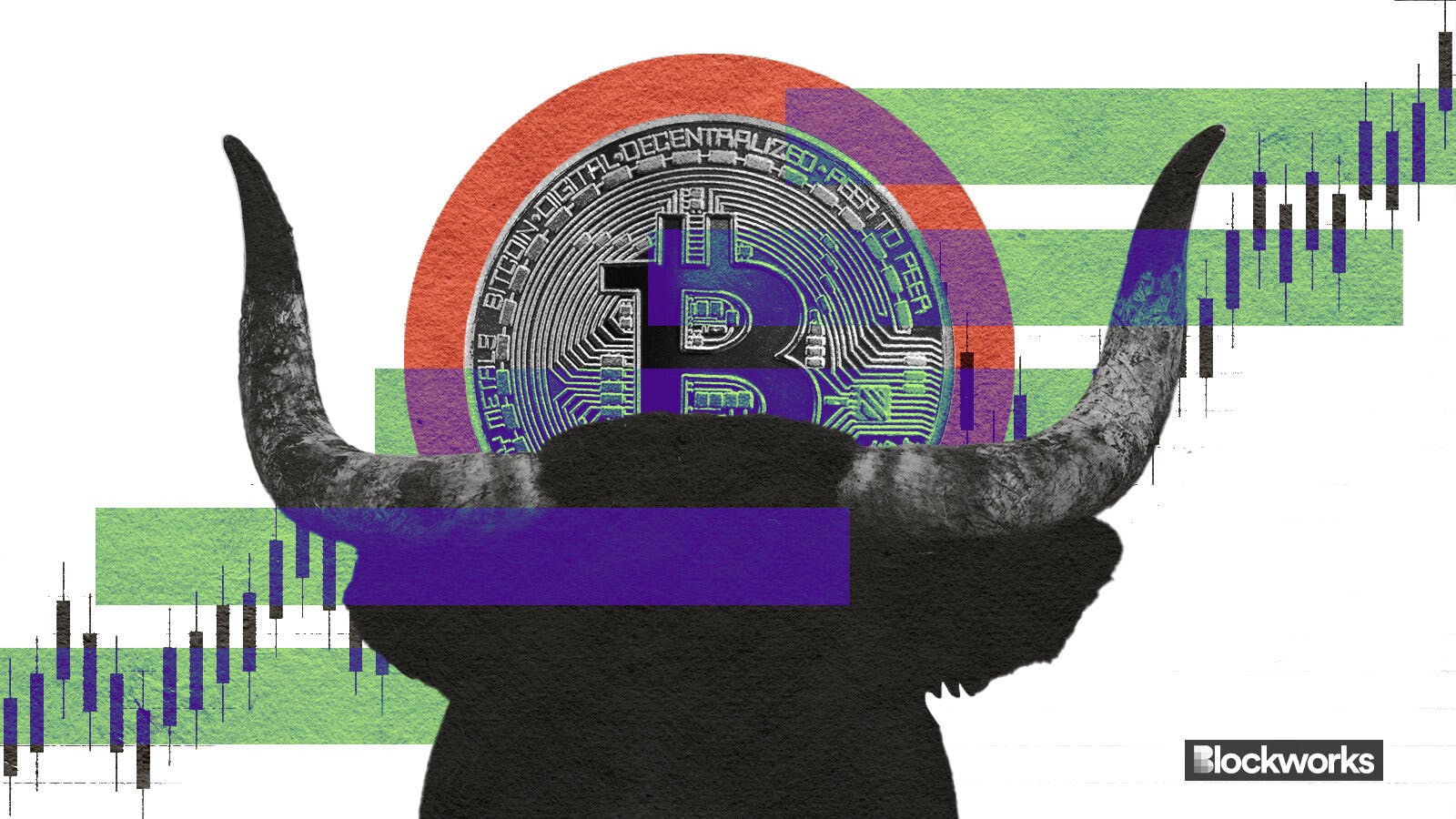Bitcoin price often drops 20% in bull markets — but it’s becoming less frequent
Bitcoin’s recent retracement only shows that the world’s most liquid cryptocurrency is still volatile

Artwork by Crystal Le
Bitcoin would be in a bear market going by old-world definitions. Luckily they don’t apply well to crypto.
A parable of legacy finance says that bear markets start when a broad index of stocks, say the S&P 500, sinks 20% or more from recent highs.
Bitcoin is practically the exact opposite of something like the S&P 500, but it has done exactly that since spot bitcoin ETFs went live earlier this month.
The price of bitcoin briefly hit $49,000 moments after BlackRock, Fidelity and eight others launched their funds on Jan. 11.
Twelve days later, bitcoin changed hands for $38,500 — a 21% drop. Anyone holding spot bitcoin ETFs since they went live are well in the red.
Read more: Let’s pour one out for the first-day spot bitcoin ETF investors
The timing of bitcoin’s recent correction is unfortunate and it may even be the result of Grayscale losing the management fee war.
But drops of this magnitude are common in bitcoin bull markets. This would be the fourth pullback of this size in our current cycle.
(Calculations of the exact beginning and end of bitcoin market cycles vary, but for the purposes of this article, our current bull market started on Nov. 21, 2022 per analysis from IOSG Ventures.)
Analyzing daily bitcoin price movements shows similar retracements occurred in March, June and August 2023. Bitcoin’s price has still doubled its lowest point from last year.
There have been six bull cycles in bitcoin’s history, not counting the 500-fold explosion in the highly eventful two years following the genesis block in 2009, which included the rise of influential platforms Silk Road and Mt. Gox, as well as the disappearance of Satoshi Nakamoto.
The first proper bull cycle, between February 2011 and April 2013, included 19 corrections of 20% or more — often extremely close to each other with June 2011 alone seeing four.
The next cycle, in 2013, was the shortest, running only 150 days. There were five corrections akin to bitcoin’s recent movements and they generally occurred once every two weeks or so.
In fact, the length of time between 20% corrections is increasing over time. They happened once every 64 days on average during the 2015-2017 bull market, during which time ballooned up to 8,900%.
The next cycle between 2018 and 2019 felt comparable shocks every 73 days, around the same frequency as the 2020-2021 run. Bitcoin more than tripled in about 200 days, from $4,100 to nearly $12,800, to start the decade.
This time around, bitcoin’s is giving up one-fifth of its value every 102 days on average — 40% more than during the previous two bull markets. This trend is also illustrated well by bitcoin’s historic volatility, which is flatlining over time.
Then again, this kind of analysis only works with the benefit of hindsight. All bull markets, of course, end with a collapse in prices of 20% or more and nobody knows whether this month’s pullback was our cycle’s last.
At least they’re getting rarer.
Get the news in your inbox. Explore Blockworks newsletters:
- The Breakdown: Decoding crypto and the markets. Daily.
- 0xResearch: Alpha in your inbox. Think like an analyst.






